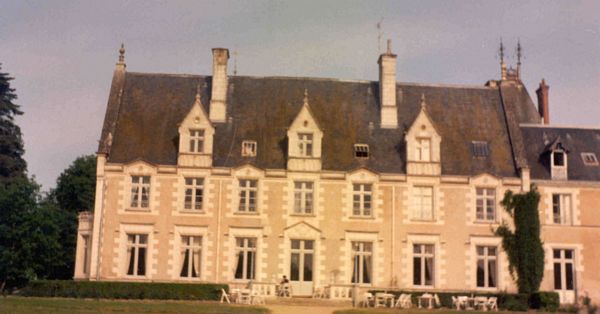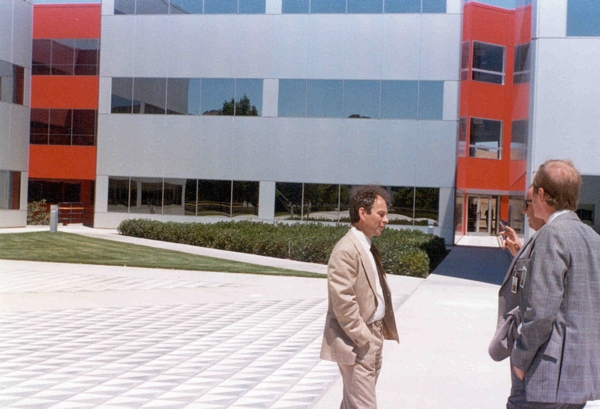

In May 1979, Rob Witty and Bob Hopgood heard about a new product announcement from a small Pittsburgh company, Three Rivers Computer Corporation, from three different sources:

The product, which later was named the PERQ, was initially called System Q then Oakland and later Pascal Alto (after the Xerox PARC Alto) before settling on PERQ as an abbreviation of perquisite
The product had been designed by Brian Rosen with the following main characteristics:
Optional additions included:
The software available would be:
The basic configuration could be enhanced to:
To put the product in perspective, there was no comparable system on the market. At a cost of $20K which was around £10K it was a major breakthrough. At the time we were purchasing IBM systems at greater cost which were about an order of magnitude worse in every respect.
Three Rivers planned to have a prototype demonstrated in August 1979 with approximately 25 pilot production systems available in October and November and these would be sold (two or three per customer) to sites who had submitted early letters of intent. Three Rivers were flooded with inquiries and had received sufficient letters of intent to sell the initial set of systems. Production systems would be shipped in January 1980 with the initial customers receiving preference in shipments.
By mid-May, RAL was being urged by Prof Coulouris and Prof Hoare to purchase at least one system for evaluation. At that time, Prof Coulouris was attempting to use under-powered LSI-11 systems for his research and we were looking at Terak systems (of much lower power than the PERQ) as possible workstations for Prof Hoare.
After discussion with the relevant Committee Chairman and negotiation with Three Rivers, an order was placed with Three Rivers on 27 June 1979 for delivery of one of the initial pilot production systems and an option on 10 of the early production systems. The cost, including VAT, packaging, transport, duty etc was $26,680 (just over £10K) provided 50% by DCS and 50% by ICF. The order was placed by the British Embassy in Washington and was the first order received by Three Rivers (rather than Letter of Intent). Three Rivers had a commitment with CMU to deliver the early systems to them. CMU was involved in the software developments. We received a delivery date of 30 November 1979 from Three Rivers.
On 9 July, Dr Thomas of ERCC visited RAL to get an update of progress in the DCS programme. By then, Rob Witty had taken over from me as Coordinator of the DCS Programme with David Duce as Secretary. We discussed the work being done on producing Cambridge Rings (later to become the Logica Polynet product) and the distributed filestore project at Keele. We also gave details of the PERQ to Dr Thomas.
He mentioned two confidential projects being done at West Gorton that ICL were interested in discussing with the DCS Coordinators. The first was Project Little which had a number of microprocessors connected by a low cost local area network. The second was a prototype workstation based on a Motorola microprocessor and an A4 bit map display.
At the same meeting, there was some discussion of a workstation based on the INTEL 8085 being developed by ICL's Singer subsidiary at Utica in the USA.
It was agreed that the DCS Coordinators would visit Charlie Portman's group in West Gorton to see the state of the projects and discuss the work being done under the DCS programme.
Later that month, Charlie Portman took over future thinking for both the CAFS and the DAP project which made the need for a meeting even more worthwhile. The meeting was provisionally arranged for 8 August but due to problems with availability, it was rescheduled in September. The meeting was set up by Peter Lever of ICL who was the ICL product salesman assigned to RAL and had been involved in the early discussions concerning mainframe replacement and office automation.
In August 1979, Bob Hopgood visited the USA with Dr Manning, the RAL Director, to discuss future products with IBM, CDC, Livermore etc.

Bob Hopgood attended the SIGGRAPH Conference in Chicago where Three Rivers were due to launch the PERQ system and have the prototype system on display. The Three Rivers stand in the Exhibition was surrounded by people throughout the three days. It was easily the most impressive new product on display out of several hundred on view. The A4 display quality was even better than we anticipated. Three Rivers had only just managed to get the system working a little while before the show and software was limited. However, a PASCAL compiler was available, several fonts and a rudimentary operating system.
At that time, the system had a touch pad as input device. This was later replaced by a tablet.
Later in the same trip, Bob Hopgood visited PRIME Computers and talked about future products with their President, Bill Poduska (later to form Apollo Computers). PRIME, at that stage, were developing a low cost ($50K) 0.4 MIP system which later became the 2250. Bob Hopgood was also shown the ECL system which later became the 9950.
At that time, the AI community was anxious to get INTERLISP available on the PRIME. Some work had been done by BBN and it was necessary to purchase a special board from PRIME to achieve this. Discussions took place with PRIME concerning the availability of this PRIME special.
On 12 September 1979, both Rob Witty and David Duce visited ICL West Gorton and had presentations from Charlie Portman's group on both Project Little and the prototype workstation that they were developing. This was in a very early stage of development being more a rig on a desk rather than a product. The most interesting feature was that it had a monochrome grey level display rather than a single bit per pixel.
ICL were given details of the PERQ which had a devastating effect. Three Rivers had an already-announced product which was probably two years ahead of a launch date by ICL assuming it got strong backing within the Company.
As a result of the meeting, we suggested to ICL that a better approach to obtaining a lead in this area would be to buy Three Rivers or at the very least come to some arrangement with the company. We anticipated a large market for products of this type and it was important that the UK had its own industry rather than having to buy from the USA.
Three Rivers had approached GE in the UK to provide a maintenance service for the PERQ. Through visits to CMU and the general grapevine, other people had become aware of the PERQ.
In September, Prof Elliott from Imperial College placed a letter of intent for two of the later systems and we also found out that William Newman (ex Xerox Palo Alto Research Centre) at Logica had a Letter of Intent in for 3 systems with a firm order for 2 of these. They saw problems with getting adequate maintenance at a distance.
Thus Logica, although they really only needed one system for R&D, had decided to buy two for safety and were preparing to set up their own maintenance service. They indicated that they would be interested in maintaining any systems that SRC purchased as well, as that would make their own maintenance more economical. We agreed to consider it.
By the end of September, the PERQ had been announced and an order for a single system placed with Three Rivers by DCS/ICF. The PERQ had been demonstrated at SIGGRAPH and had demonstrated a graphics performance in excess of our expectations. At £10K, it was clearly a most impressive product. At that time, the undiscounted price of a Tektronix 4014 storage tube was similar.
ICL were doing early development work on a similar system but were a long way from a product. We suggested to ICL that they should consider some arrangement with Three Rivers.
Other people in the UK were ordering PERQs and, in particular, Logica were prepared to maintain any PERQs purchased by SERC.